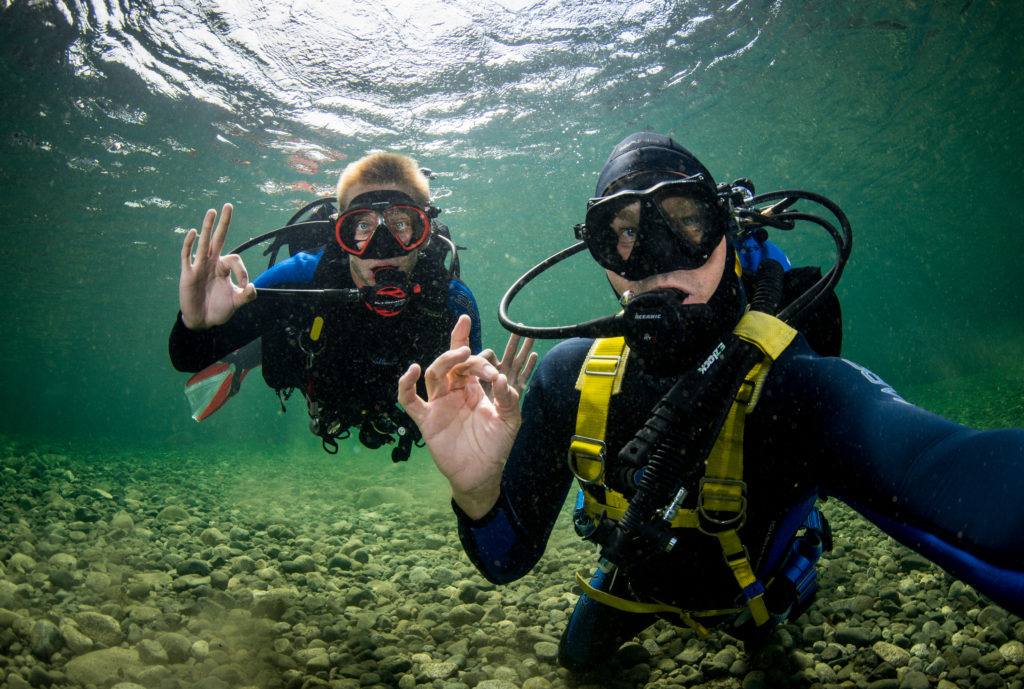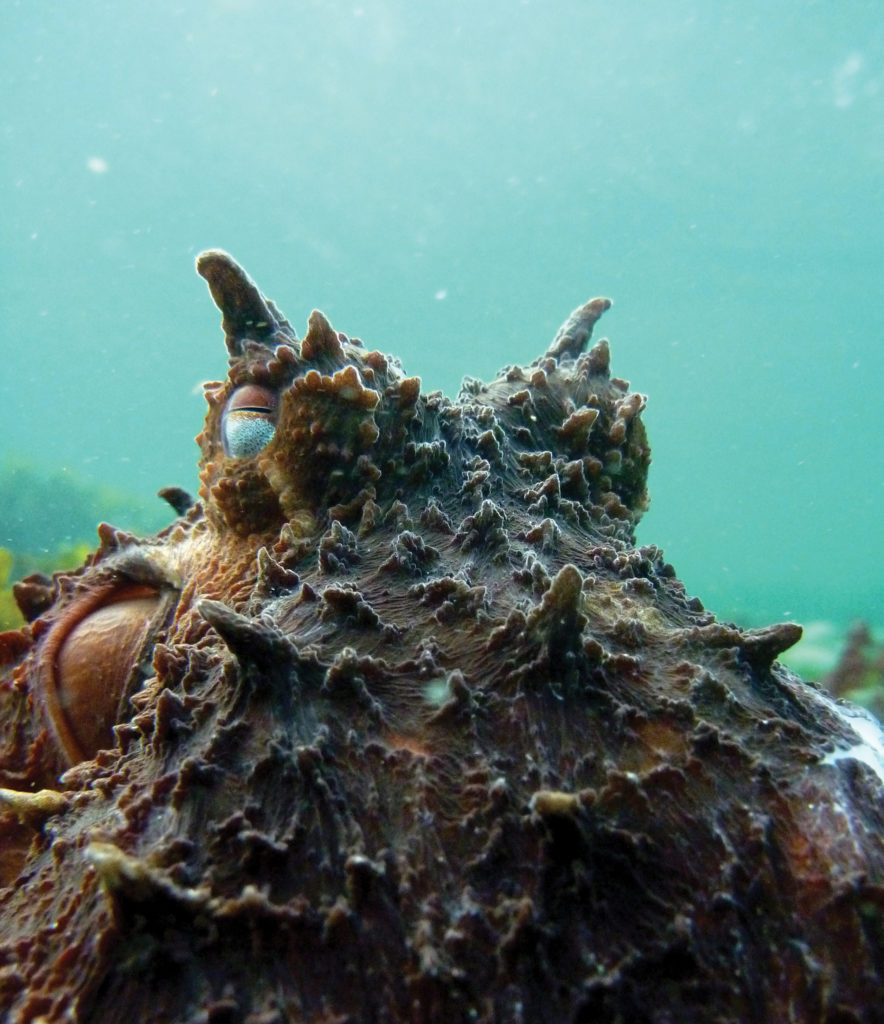
Slip below the surface into the surreal.
It’s a world of vivid, eye-popping colours; creatures that both amaze and alarm; and out-worldly landscapes seemingly dreamed up by a sci-fi artist.
This dreamy underworld is right on our doorsteps too. Just slip on a dry suit, gear up with a buddy and splash down below the waves to glimpse a very different world.
“As soon as I was underwater for five minutes I knew this is what I wanted to do for the rest of my life,” says 22-year-old Dylan Smith.
Smith was teaching courses at the Tribune Bay Outdoor Education Centre on Hornby Island when he first tried scuba diving. Five years later, he’s now in Campbell River managing Beaver Aquatics dive shop, teaching others how to dive, and just beginning to hone his underwater photography skills.
“I was always kind of artsy. I liked drawing and painting…and then I realized I could use my art skills underwater,” he says, and then adds, “but it’s a whole different level of diving.”
An ordinary dive in safe water is challenging enough for a novice diver, but the ocean presents far greater dangers even to veterans. That level of difficulty is compounded when you’re trying to focus on a subject, while trying to maintain neutral buoyancy and trying not to get swept away in the strong currents and tides.
“You get excited and start following something and suddenly you become unaware of your surroundings… you can get caught focusing on dolphins and suddenly you’re at 120 feet!” says Eiko Jones.
Jones, a Campbell River resident, makes a living cutting and installing granite, but he’d rather be in the water with his dive and photography gear. In just a few short years, Jones has developed an international following for his stunning underwater photographs.
One in particular kickstarted his photographic career; it’s a “cloud of tadpoles” that he captured while diving in a local swamp. National Geographic featured the picture last April in “Your Shot” and since then it’s been viewed more than 14,000 times. “The tadpole photo has been my most successful, but salmon has been my specialty,” says Jones, as he sips at his coffee in Starbucks.
Last summer and fall, Jones spent much of his free time in area rivers and streams adding to his catalogue of salmon images.
“It’s something I’m quite passionate about and I want to get the story of the salmon out there,” he adds.
But this time of year is for the ocean. Jones and Smith are avid diving buddies who take a co-operative approach to underwater photography.
In a nutshell, Jones goes for the big picture while Smith gets up close to capture “out of this world” macro images. One example is Smith’s close-up of the head of a giant Pacific octopus which better resembles the surface of a craggy asteroid.
He also enjoys telling the story of his little octopus buddy. Smith was photographing the juvenile octopus when it appeared to “take a liking” to the man in the black suit.
“It climbed right up my arm and then stayed there – for almost 40 minutes! It was amazing,” says Smith.
Every dive is a new experience, but sometimes it’s not so amazing. Every year local divers volunteer their time to clean trash out of McIvor Lake, a popular recreation area just west of the city. “Last year we cleaned 1,200 pounds of trash out of the lake. The worst was around the ski dock. The bottom was littered with beer cans. It was terrible,” notes Jones.
He’s also been busy photographing local populations of sea stars. For now, they appear to be healthy, but a mysterious ailment known as “sea star wasting” is decimating West Coast populations, particularly around Vancouver and it’s also been seen at the north end of Vancouver Island.
“I photographed 11 species of sea stars, probably more, on the pilings of the Argonaut Wharf. I can go back a year from now and see what’s there,” says Jones.
By documenting local sea stars or the life cycles of Pacific salmon – through dramatic photography – Jones hopes his passion for the marine world spreads to others, before it’s too late.
“The last bluefish tuna will probably sell for $5 million so that some people can say they had the last piece of sashimi,” says Jones. “A big part of my work is trying to bring awareness to the watershed because it all leads to the ocean. I’m not a guy to preach. I just want to create awareness and appreciation – and it’s about appreciating your environment. I even have a hard time eating fish because why would I eat my subjects?”
